Glossary of Real Estate Terms and Organizations
Real Estate Board of New York (REBNY)
A real estate trade group that Longstreet is an active part of. The organization, that is over one hundred years old (1896) , is known for its lobbying on behalf of the industry and for its annual banquet and diary.
Force Majeure Force majeure refers to a clause that is included in contracts to remove liability for natural and unavoidable catastrophes that interrupt the expected course of events and prevent participants from fulfilling obligations.
Free Rent
A description of an amount of time that is negotiated between a landlord and tenant during which rent is not paid. Often times a prospective tenant might request five month’s free rent on a five year lease, which if accepted by a landlord would mean that rent payments would commence on the sixth month.
Work Letter
Improvements requested by a tenant for a landlord to perform. Often, in lieu of this, a price per square foot is agreed on, with the landlord then giving the tenant that amount of money to do the work himself.
Rentable Area
This is the amount of space that is "listed," which is often 15-25% less than there actually exists in the space. The measurements are conducted in a manner that is approved by REBNY, and often includes common spaces, such as roofs, elevators, hallways, bathrooms, etc. All commercial space shown in New York City is "rentable," meaning that you are somewhat comparing apples to apples, although different buildings have different loss factors.
Usable Area
Also referred to carpetable area: The real square footage of space that one leases. This could be compared to how residential condominiums are listed, meaning that they are sold with exact and true measurements.
Brokerage Commission
This is the fee that is paid to the broker (Longstreet) by the landlord (building owner). Such expenses are built into the rate asked for a space, so it could be argued that one pays for this whether a broker is used or not.
We very rarely are compensated by those who are looking for space, meaning the tenant, and can only be paid by one side or the other, unless there is full disclosure otherwise.
It is important to note that all commissions are negotiable in New York State, as is who pays the broker.
Electricity
Harry Helmsley, a major player in the New York Real Estate world (RIP), once said that he made all of his millions off of electric charges, and not rent.
One pays for electricity in addition to rent, and this is usually done in terms of a fixed amount per year per rentable square foot. A common figure is $3.00 a square foot.
This, like everything else, is negotiable. There are three kinds of electric payment options, though, which are determined by the landlord:
Direct -meter
This would be just like the meter that you have at home. You would pay Con.Ed for what you use, with a meter making that determination. This is very unusual in class A office buildings but is often the best option for a tenant.
Sub-meter
This should save a tenant money as landlords get a break for large amounts of power used, but this rarely happens. It is usual that the landlord marks-up the money owed to more than a direct meter would cost.
Rent Inclusion
A set price per square foot per year, which assumes that the tenant is using the maximum amount of electricity 24/7, as if one were running a lighting shop.. A large profit center for the landlord.
HVAC
Heat, ventilation and air conditioning. Heat is always included in office space, as per law. Air conditioning is optional, and usually costs extra after hours. A large hidden expense. We always put in leases that the air conditioning should be working at "season turn on."
Lease
A binding agreement for a tenant to occupy a space for a fixed amount of time, which only becomes active when signed on both sides.
All real estate is effective only when in writing, and so there are no oral leases for office space–offers are not anything but the beginning of a conversation.
Net-Lease
A lease which compels the tenant to pay insurance, utilities, taxes and all other services. This is somewhat unusual for smaller office space leases.
Gross Lease
In this situation, which is what most tenants have leases for Manhattan office space, one pays a base rent which includes current operating expenses and taxes.
After the first year is over, one then often pays for their percentage of the escalations for operating expenses and taxes, which can add more than 5% to lease costs per year.
Operating Expenses
What it costs to run a building, including building staff, cleaning, utilities, repairs and water.
Porter’s Wage
This can be added to tenant’s expenses in addition to operating expenses after the first year’s occupancy. It is subject to negotiation and is based on the Local 32B/32J Union’s contract.
Commercial Rent Tax (CRT)
If you pay more than $250,000 a year in rent, then the city charges you in the area of 6% extra with this tax, which was created in the 1960's.
New York's Biggest Landlords
Brookfield Asset Management, 27.529 million square feet
SL Greene Realty Corp. 27,240,372
Vornado Realty Trust 24,669,785
Tishman Speyer 22,882,568
Silverstein Properties 13,413,719
The Durst Organization 12,325,582
Rudin Management 10,363,057
RXR Realty 9,621,724
Boston Properties 8,961,755
